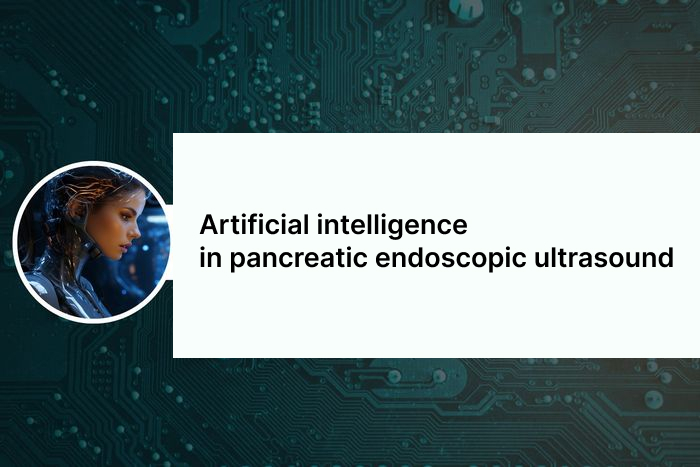
Artificial intelligence in pancreatic endoscopic ultrasound
Pancreatic neoplasms remain a formidable challenge in modern oncology. There has been little progress in the treatment of pancreatic cancer in recent years. New drugs only help to extend the patients' lives by a few months. The only hope for a full recovery is radical surgery performed at an early stage of the disease. Therefore, one of the main directions is early detection and imaging strategies to reveal developing pancreatic cancer.
Endoscopic ultrasound (EUS) is a combined endoscopic and ultrasound technique that not only detects signs of tumors but also provides material for morphological studies. The diagnostic sensitivity of the method exceeds that of other diagnostic imaging methods, including PET-CT, CT and MRI. However, the method is highly operator-dependent (i.e. it can only be performed by a highly trained specialist, and training is extremely difficult). As a result, results vary widely between medical centres. In order to improve the EUS indicators and optimize the diagnosis of pancreatic tumors, the specialists of the Gastrointestinal Cancer Research Laboratory at the WCRC for Personalized Medicine are working to implement artificial intelligence technologies.
The main difficulties encountered by the researchers were the reproducibility of the study results by different specialists, the difficulty of reliable interpretation of the changes detected without morphological verification, and the relatively small number of studies performed (compared with CT, MRI, etc.). In this regard, the study design included EUS images with reliable morphological evidence of tumors of different genesis in the main group. The control group consisted of images free of tumor changes. Tumor boundaries were marked on the selected images. At present, the total number of images in the database is almost 2,000. The researchers have obtained a certificate of state registration for the database.
Images were multiplied to increase the size of the database. The data was then fed into a convolutional neural network for deep machine learning. Multiple epochs of training resulted in a maximum diagnostic accuracy of 94%, with a confidence level of 98%.
/фото_англ.2.jpg)
These levels decreased when images with EUS evidence of chronic pancreatitis were added to the dataset. However, this high accuracy is encouraging. By the end of the year, the Centre's specialists plan to develop a beta version of the software that will be able to detect suspicious areas in pancreatic EUS images.
15.08.2023
